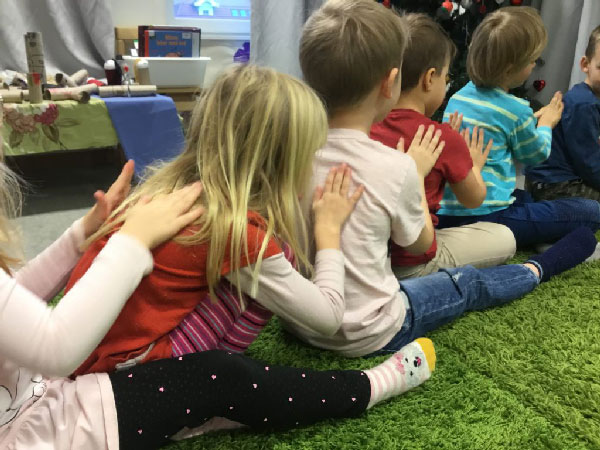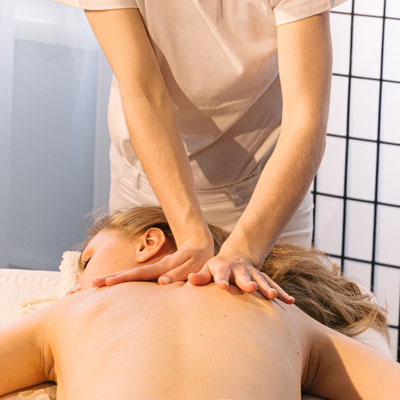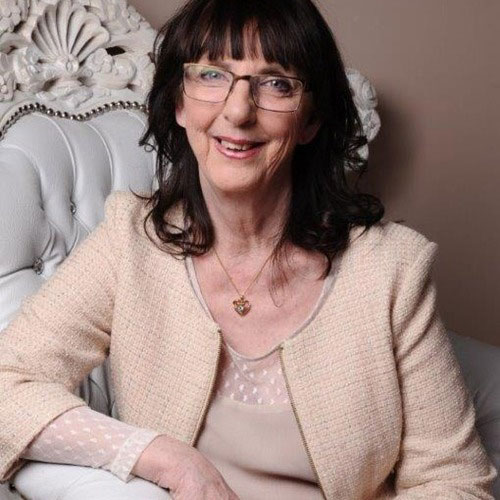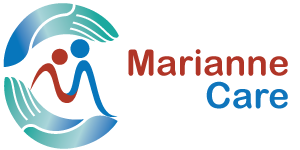Tactile Stimulation
How I came into contact with it
 When we lived in Sweden, our children, who were then 10 and 12 years old, came home to say that they had had massage lessons at school. At first that sounded a bit strange to us, but we were told that the children are already introduced to massage at the daycare and what the benefits were.
When we lived in Sweden, our children, who were then 10 and 12 years old, came home to say that they had had massage lessons at school. At first that sounded a bit strange to us, but we were told that the children are already introduced to massage at the daycare and what the benefits were.
In Sweden older children receive real massage lessons, they learn some simple handles from Tactile Stimulation. Schools like to apply this, it has been proven that learning outcomes increase by up to 30%. This is not surprising when you know that adrenaline, the stress hormone, is responsible for the survival part of the brain getting enough blood. As a result, blood (i.e. oxygen) is drawn from the front part of the brain. Now that is precisely the part with which you record new knowledge! When oxytocins are released by touching receptors in the skin, the opposite happens: the blood supply is optimal, the brain opens up, pleasant feelings are linked to learning.
Later, when I worked in a nursing home in Sweden, I was offered that course and I immediately said 'Yes' to it. At the time it was hardly known outside Sweden, but fortunately it is also on the rise elsewhere.

What is tactile stimulation?
Tactile means touch. But the term "tactile senses" does not only refer to the touch itself, but encompasses the entire sense of touch, or the senses of the skin as some prefer to call it. The tactile senses contain receptors for touch, pressure, vibration, pain, cold and heat. By consciously and structurally touching the skin, several of these receptors are activated, which lead through their nerve pathways to the brain to the coordination system - the oxytocin system. The effects show quickly!
Oxytocin
The cuddle hormone
Oxytocin is an important substance in your brain that is responsible for a feeling of intimacy and connection. In addition, oxytocin gives you self-confidence, makes you happy and helps you relax. Oxytocin also reduces stress and suppresses feelings of anxiety that can hinder you considerably. The oxytocin system can be affected by touch, heat, fatty foods and alcohol.
Application of Tactile Stimulation
And what are the effects
The need for touch increases in case of illness, injury and disability. Tactile Stimulation is applied to children and adults with a physical or mental disability and brain damage.
You can think of the consequences of accidents, a stroke, etc. Very good results have also been achieved with other patient groups, such as with autists (improvement of contact), dementia (delay of the disease process), spasticity (relaxation and pain relief). ) and hyperactive children (more rest and better learning ability). But this method is also applicable for ADHD and bullying at school. This method is also an important aid in palliative care. Tactile Stimulation is a treatment method for everyone, it provides deep relaxation and an increase in quality of life.
The effect of Tactile Stimulation
- supports the development of the nervous system
- improves body awareness
- strengthens the bond between parents / children / partners
- improves communication
- restore gastric and intestinal function
- improves immunity (defense mechanism)
- relieves pain
- creates calm and tranquility
- regulating blood pressure

Gunilla Birkestad
Background
The method was developed by Gunilla Birkestad. In 1984 Gunilla worked in a nursing home where she discovered the need for touch.
After attending a baby massage teacher seminar in 1989, she discovered a book that focused on this topic. Ashley Montagu’s book “Touching: the human significance of the skin” cited the effects of touch as tactile stimulation.
In 1992 she met Prof. Kerstin Uvnas Moberg from the Karolinska Institute.
From that moment on, Gunilla devoted himself fully to researching this phenomenon and its applicability in healthcare institutions.
In this way, a method gradually developed that relieves carers of a great deal of work and that means nurturing, relaxing and reducing pain for patients.
This stimulation of the skin as a tactile organ is nowadays not only used in every care center in Sweden, but has also found its way to almost all nurseries and schools.
Her experiences gradually led to a method of contact within medical practice, care for the mentally handicapped, rehabilitation and education. Since then, the method has been further developed and now includes a definitive structure.

46820 Anna (VLC)
Tel ES: +34 697 993 736
Tel SE: +46 73 823 13 89
email:


